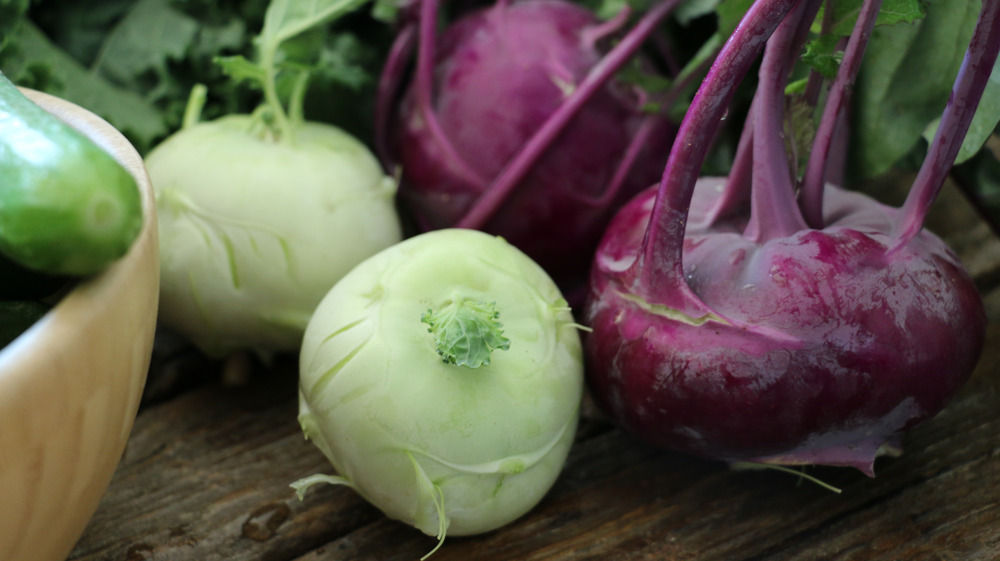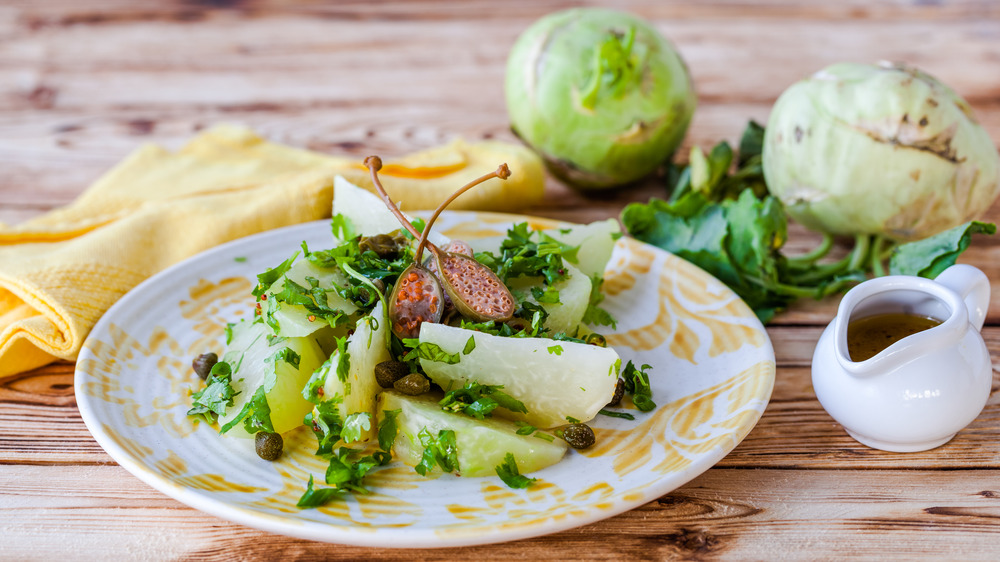The Reason Some People Think Kohlrabi Is A Superfood
Move over kale, there's a new superfood in town: kohlrabi. Ko-what? You may have seen this odd-looking, purple, pale green, or white, bulbous-looking vegetable with a long leafy stem (via Healthline) in the produce aisle of your favorite supermarket or the local farmers market. Known as German turnip or turnip cabbage and often listed as a root vegetable, it's neither a turnip nor a root (via Heal With Food). Instead, this up-and-coming cruciferous vegetable is a cabbage that's related to kale, broccoli, brussels sprouts, and cauliflower, with a taste "like the stem of a broccoli but sweeter" (via Seacoast Eat Local).
Before we get into exactly makes kohlrabi a superfood, what is a superfood? According to Health, "Though there is no legal or medical definition, superfoods are nutrient powerhouses that pack large doses of antioxidants, polyphenols, vitamins, and minerals." Medical News Today describes superfoods as having "a very high nutritional density" and containing "a high volume of minerals, vitamins, and antioxidants."
Kohlrabi is packed full of nutrients
According to Healthline, kohlrabi is an "excellent source of nutrients," offering 93 percent of the daily value of Vitamin C, along with Vitamin B6, potassium, magnesium, manganese, and folate. Kohlrabi is also packed full of fiber and antioxidant compounds (via Organic Facts) while also containing "health-promoting phytochemicals [...] that protect against certain cancers" (per Dr. Nicholas V. Perricone via Town & Country). A scientific study on the nutrient density of fruits and vegetables found kohlrabi to have a higher nutrient density score than carrots, cabbage, and cauliflower, though less than kale and broccoli (via the CDC).
No wonder people are increasingly referring to kohlrabi as a superfood and recommending it as a superfood to eat during the fall, when it's in season. Kohlrabi can be enjoyed raw, eaten plain with some salt, shaved into thin slices or shredded to add to salads and slaws, cut into sticks to use in a dip, added to soups, pureed as a mash, made into fries, or cooked as part of a casserole or stir-fry (via The Oregonian). Kohlrabi is also great when cut into cubes and roasted or simply sautéed (via Health).

